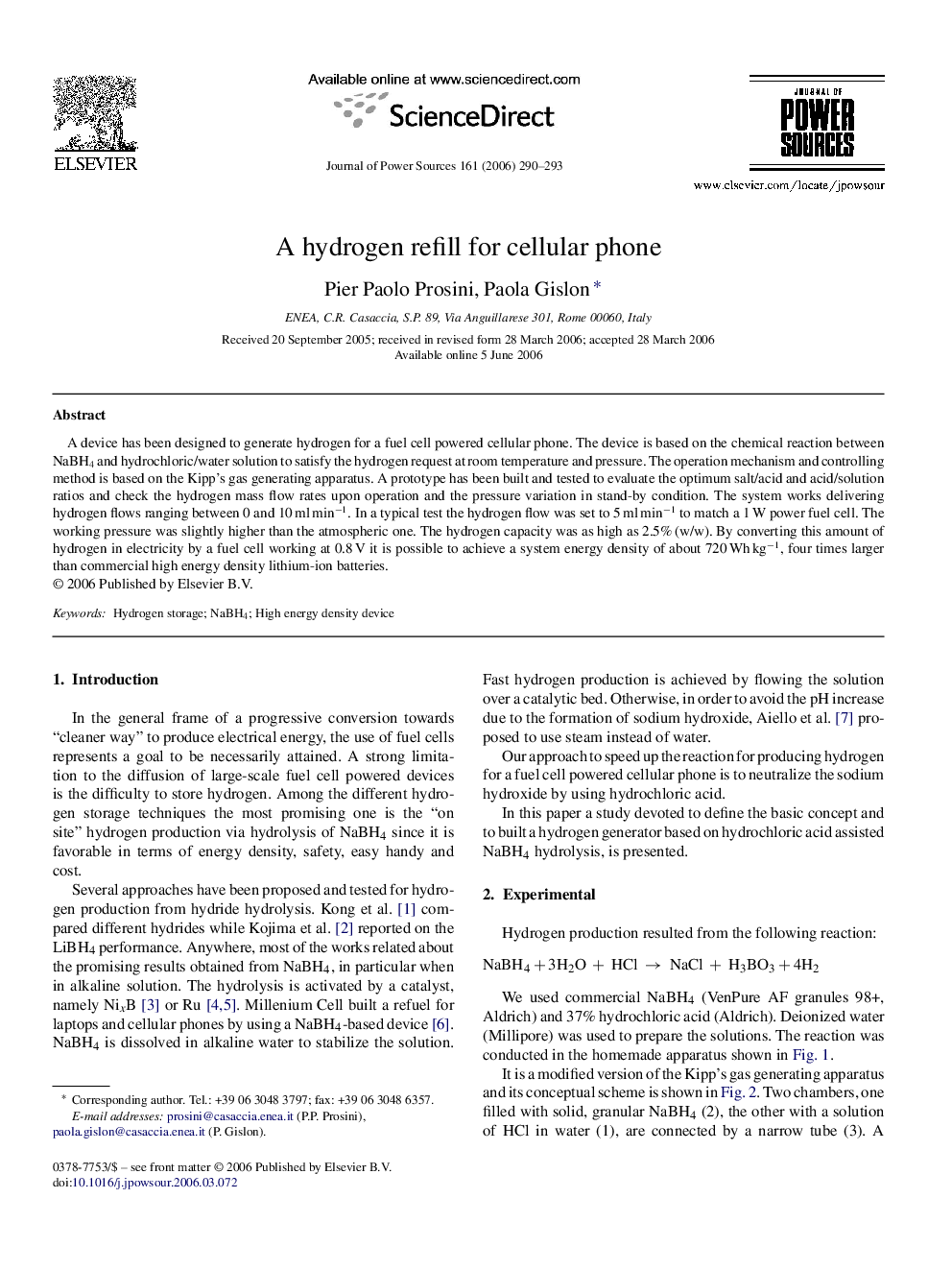| Article ID | Journal | Published Year | Pages | File Type |
|---|---|---|---|---|
| 1287000 | Journal of Power Sources | 2006 | 4 Pages |
A device has been designed to generate hydrogen for a fuel cell powered cellular phone. The device is based on the chemical reaction between NaBH4 and hydrochloric/water solution to satisfy the hydrogen request at room temperature and pressure. The operation mechanism and controlling method is based on the Kipp's gas generating apparatus. A prototype has been built and tested to evaluate the optimum salt/acid and acid/solution ratios and check the hydrogen mass flow rates upon operation and the pressure variation in stand-by condition. The system works delivering hydrogen flows ranging between 0 and 10 ml min−1. In a typical test the hydrogen flow was set to 5 ml min−1 to match a 1 W power fuel cell. The working pressure was slightly higher than the atmospheric one. The hydrogen capacity was as high as 2.5% (w/w). By converting this amount of hydrogen in electricity by a fuel cell working at 0.8 V it is possible to achieve a system energy density of about 720 Wh kg−1, four times larger than commercial high energy density lithium-ion batteries.
